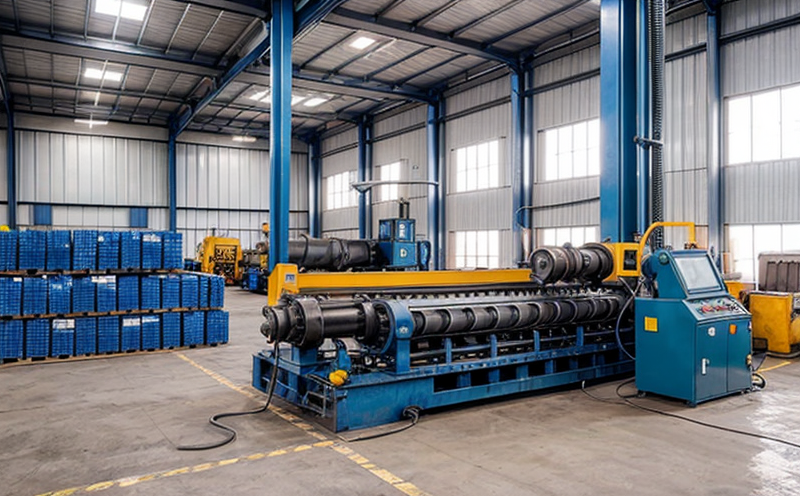ISO 14122 Safety of Machinery Access System Compliance Testing
The ISO 14122 series focuses on ensuring that machinery access systems are designed, manufactured, and installed to minimize the risk of injury or harm. This standard is crucial in sectors like manufacturing, automotive, and construction where complex machinery plays a significant role. For government and trade facilitation purposes, compliance with these standards ensures that goods meet international safety requirements, thus facilitating smoother cross-border transactions.
ISO 14122 comprises multiple parts, each addressing different aspects of access systems in machinery. Part 1 outlines the general principles for the design and construction of access systems to ensure safe operation. Parts 2 through 5 delve into specific types of access systems such as ladders, platforms, stairways, and walkways.
The testing process involves several stages, starting with a thorough review of the machinery's design documentation to ensure it adheres to the principles outlined in ISO 14122. Following this, actual components are subjected to various tests designed to simulate real-world conditions that could potentially cause injury or malfunction.
Key testing parameters include load-bearing capacity, slip resistance, and structural integrity under dynamic loading. Specimen preparation involves replicating the access system as closely as possible to its intended use in a controlled environment. Instrumentation used includes force gauges, strain measurement devices, and video analysis systems to capture performance metrics accurately.
The testing apparatus typically consists of hydraulic or pneumatic load simulators capable of applying loads up to several tons, depending on the machinery's size and weight. Video cameras are positioned at strategic points around the access system to record any movements or deformations during testing. After each test run, data is analyzed to assess compliance with ISO 14122 requirements.
Acceptance criteria for passing these tests include demonstrating that the access system can withstand specified loads without failure and that it provides adequate protection against slips and falls. Compliance officers and quality managers rely on these rigorous tests to ensure their machinery meets international standards, thereby reducing liability risks associated with non-compliance.
Scope and Methodology
The scope of ISO 14122 testing encompasses the design, manufacture, installation, and maintenance phases of access systems in machinery. The methodology involves several key steps:
- Reviewing design documentation for adherence to ISO 14122 principles.
- Performing static load tests on individual components.
- Conducting dynamic load tests simulating real-world usage conditions.
- Evaluating the slip resistance of surfaces using standardized methods.
The testing process is designed to identify potential hazards early in the lifecycle of machinery, allowing for necessary modifications before installation. This proactive approach helps ensure that access systems are safe and reliable from the outset, reducing the likelihood of incidents during operation.
Competitive Advantage and Market Impact
- Meeting ISO 14122 standards enhances a company's reputation for producing high-quality, safe machinery. This can lead to increased market share and customer loyalty.
- Compliance reduces legal risks associated with non-compliance, offering protection against potential lawsuits from injured users or bystanders.
- Facilitates smoother cross-border trade by ensuring that goods comply with international safety standards, thus reducing the likelihood of regulatory barriers.
Use Cases and Application Examples
| Use Case | Description |
|---|---|
| Mechanical Manufacturing Plants | In a mechanical manufacturing plant, ISO 14122 compliance testing ensures that access ladders and platforms are designed to withstand the weight of workers and heavy machinery. This reduces the risk of accidents during routine maintenance. |
| Automotive Factories | In automotive manufacturing, stairways leading to engine compartments must be slip-resistant and capable of withstanding the weight of service personnel. Testing ensures that these access systems meet safety standards, protecting workers from slips and falls. |
| Construction Sites | On construction sites, walkways around cranes and other heavy machinery need to be safe for workers who may have to traverse them during the day. ISO 14122 testing verifies that these walkways meet safety requirements. |





